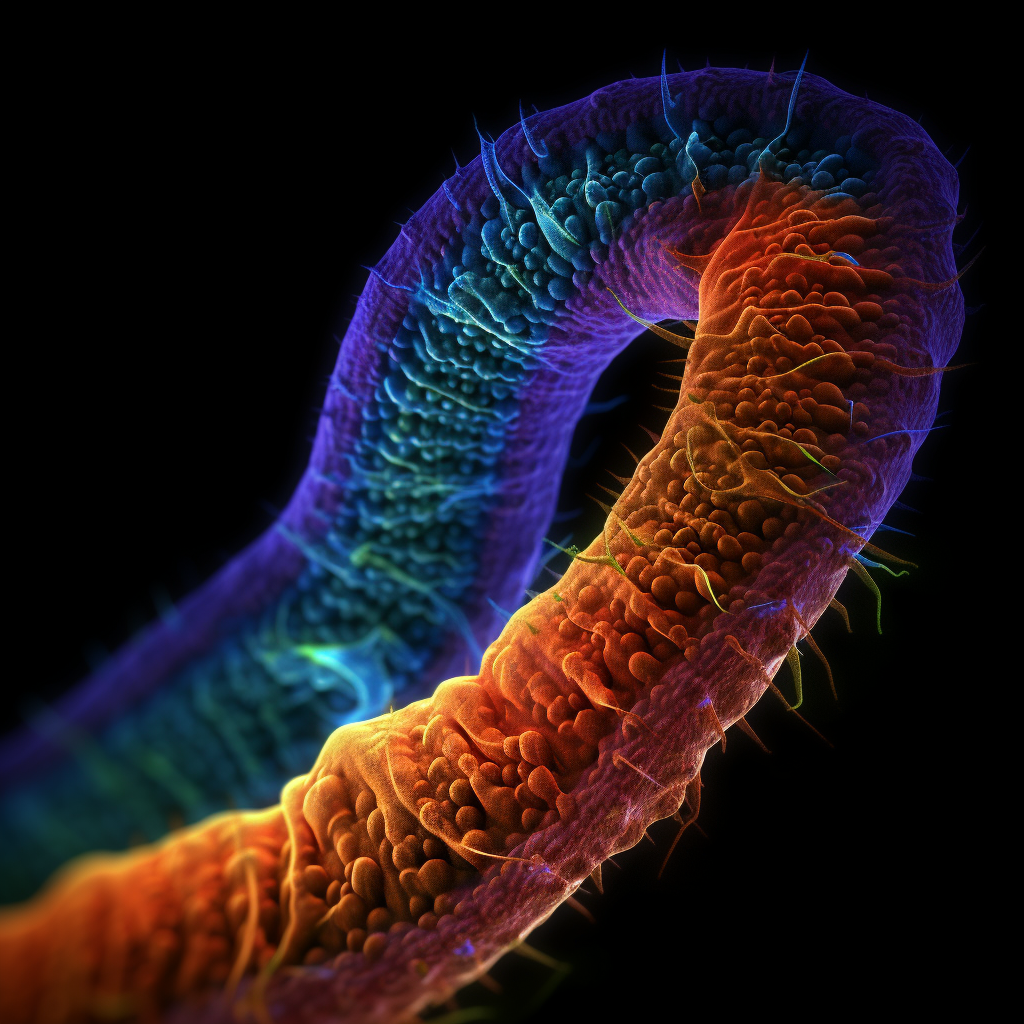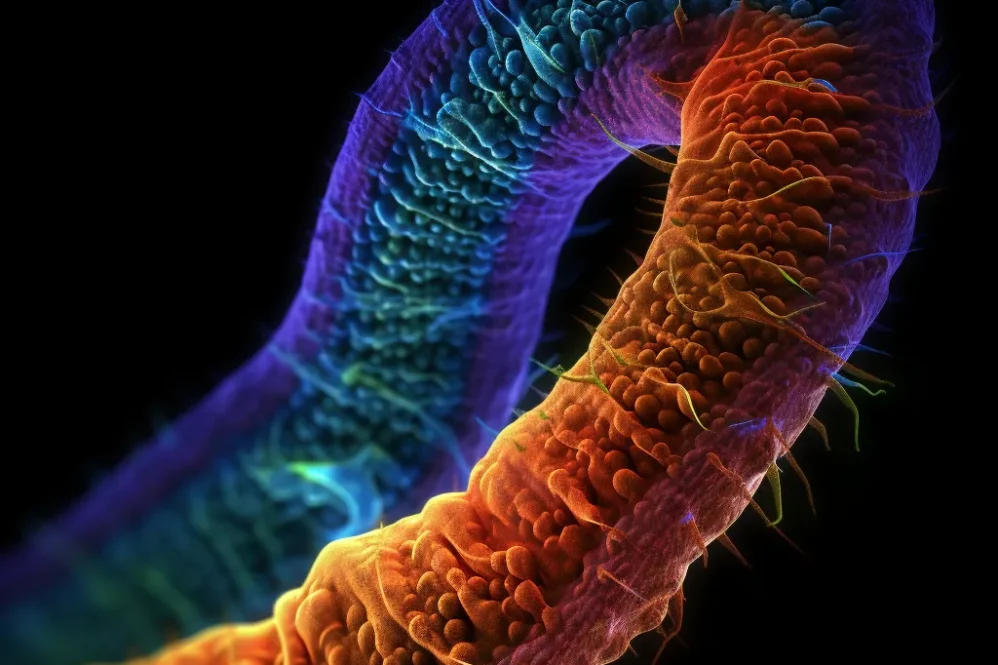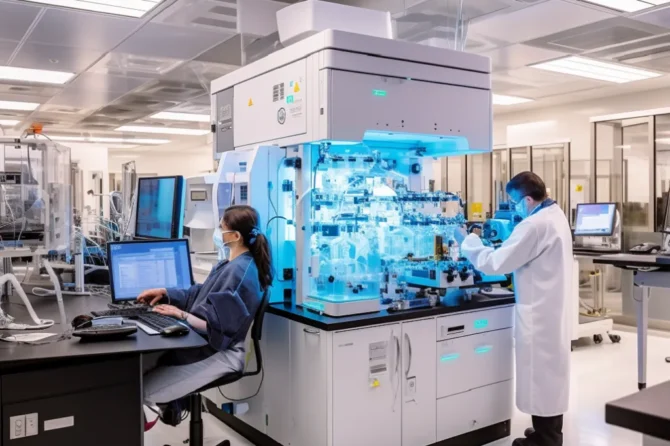Introduction:
RNA interference (RNAi) has emerged as a powerful tool for studying gene function in a wide range of organisms, including parasitic species like Schistosoma mansoni, a significant causative agent of schistosomiasis in humans. By selectively silencing target genes using double-stranded RNA (dsRNA), RNAi allows researchers to investigate the specific impact of gene knockdown on the physiology and behavior of parasites, offering invaluable insights into the intricate biology of Schistosoma species. This technique holds great promise for advancing our understanding of parasite biology and developing potential therapeutic interventions to combat schistosomiasis, a prevalent neglected tropical disease affecting millions worldwide.
However, to ensure the reliability and interpretability of RNAi experiments, it is crucial to employ suitable control treatments that do not interfere with the biological processes of interest. Selecting appropriate control dsRNAs is particularly challenging in the context of schistosome research, where the identification of reliable control groups is essential for accurate data interpretation in the complex life cycle of these parasitic organisms.
In this study, our primary objective was to comprehensively evaluate the effects of three non-schistosome dsRNAs, namely neoR, ampR, and gfp, as potential controls in S. mansoni RNAi experiments. These control dsRNAs are commonly used in various RNAi studies as they target genes that are not present in the schistosome genome, thus providing a seemingly specific control option. However, despite their widespread use, their suitability as controls in S. mansoni RNAi experiments has not been thoroughly investigated.
To address this knowledge gap and improve the rigor of RNAi research in Schistosoma, we conducted a series of experiments to evaluate the impact of these control dsRNAs on S. mansoni parasites. First, we examined the morphological integrity of the treated worms using advanced imaging techniques, specifically confocal laser scanning microscopy (CLSM). This allowed us to visualize and assess any potential morphological changes induced by the control dsRNAs in the context of schistosome tissue organization and reproductive development.
Furthermore, we investigated the effects of the control dsRNAs on predicted off-target genes through reverse transcription quantitative polymerase chain reaction (RT-qPCR) analysis, a reliable method for quantifying gene expression. Off-target effects occur when the control dsRNAs inadvertently silence unintended genes with partial sequence similarity to the intended target. Understanding and validating potential off-target effects are crucial to ensure the specificity of RNAi experiments and the accuracy of the obtained results, particularly in complex organisms like Schistosoma.
The evaluation of these control dsRNAs in S. mansoni RNAi experiments holds significant implications for the field of parasitology, especially in the context of schistosome biology and disease control. Identifying reliable and effective control treatments is essential for accurate data interpretation and enhancing the validity of RNAi studies, which have the potential to uncover novel drug targets and therapeutic interventions against schistosomiasis. Moreover, shedding light on any potential off-target effects induced by the control dsRNAs will improve the design and execution of future RNAi experiments in Schistosoma, ultimately contributing to the advancement of parasitological research and global efforts to combat this devastating disease.
In summary, our study aimed to comprehensively evaluate the effects of non-schistosome dsRNAs as controls in S. mansoni RNAi experiments, emphasizing the importance of considering Schistosoma-specific aspects in RNAi research. By carefully evaluating the impact of control dsRNAs on parasite morphology and gene expression, we aim to contribute to the development of robust and reliable RNAi techniques for Schistosoma, fostering advancements in our understanding of parasitic biology and the development of potential therapeutic strategies against schistosomiasis.
Methods Used in the Schistosoma Mansoni RNAi Experiments:
To assess the effects of non-schistosome dsRNAs on Schistosoma mansoni, we treated the worms with three candidate control dsRNAs: neoR, ampR, and gfp. The worms were maintained in vitro and subjected to a treatment period of 22 days, with dsRNA administered every 2-3 days. A control group treated with DEPC-H2O was included for comparison. We analyzed 15 worm couples per condition, with each couple representing a biological replicate.
First, we employed confocal laser scanning microscopy (CLSM) to examine the morphological integrity of various tissues, including reproductive organs (ovaries and testes), gastrodermis, parenchyma, tegument, and gut, specific to Schistosoma mansoni. Representative images were captured to assess any structural differences between the control and dsRNA-treated worms. The CLSM analysis allowed us to visualize the impact of dsRNA treatments on the overall tissue organization and development of reproductive organs in Schistosoma.

Next, we utilized reverse transcription quantitative polymerase chain reaction (RT-qPCR) to measure the transcript levels of predicted off-target genes in the treated worms. We selected genes with the highest number of predicted off-target hits for each dsRNA and focused on genes known to be transcribed in paired adult schistosomes. The transcript levels of these potential off-target genes were compared between the control group and the dsRNA-treated groups, separately for females and males. This analysis enabled us to determine if the dsRNA treatments influenced the expression of off-target genes and provided valuable insights into potential unintended effects in the context of Schistosoma.
By evaluating the effects of these control dsRNAs on Schistosoma mansoni using advanced imaging techniques and gene expression analysis, our study contributes to the field of parasitology by providing critical data on the suitability of control treatments in RNAi experiments with Schistosoma. Understanding the specific effects of these dsRNAs on Schistosoma morphology and gene expression profiles is crucial for advancing the field and facilitating the development of more targeted and effective RNAi techniques against schistosomiasis. As we continue to shed light on the intricate biology of Schistosoma and the potential therapeutic avenues for combatting this parasitic disease, our research underscores the importance of rigorous experimental evaluation and optimization in the context of Schistosoma research.
Results Found in the Schistosoma Mansoni RNAi Experiments:
The CLSM analysis revealed no significant morphological differences between the control and dsRNA-treated Schistosoma mansoni worms after the 22-day treatment period. The reproductive organs, including ovaries and testes, showed normal development and structure in all groups.
The division of the ovary into an anterior part containing immature oocytes and a posterior part containing mature oocytes was observed, indicating unaffected ovary development. The vitellaria, responsible for egg production, also exhibited no differences between the control and treated worms. In males, the structure of testicular lobes and seminal vesicles, as well as the occurrence of spermatogonia, appeared unaffected by the dsRNA treatments. Additionally, no phenotypic differences were observed in other tissues, including the tegument, parenchyma, and gut, specific to Schistosoma.
The RT-qPCR analysis of predicted off-target genes yielded interesting findings. The transcript levels of off-target genes in the neoR dsRNA-treated group exhibited a mixed pattern. In male schistosomes, the transcript levels of four out of six predicted off-target genes (Smp_00440, Smp_158130, Smp_159730, and Smp_310930) were reduced compared to the control group.
However, no changes in the transcript levels of these genes were observed in treated females. On the other hand, Smp_174170 showed increased transcript levels in both male and female worms treated with neoR dsRNA. The upregulation of Smp_174170, annotated as homeobox protein Meis3-A, suggests a potential natural regulation of this gene by the parasite’s regulatory RNA machinery. The dysregulation of other off-target genes, such as Smp_004440 (putative neurexophilin and PC-esterase family member), indicates a potential influence of neoR dsRNA on important signaling pathways and neurotransmitter maintenance specific to Schistosoma.
In the case of gfp dsRNA-treated worms, the transcript levels of selected off-target genes were minimally affected, with more pronounced changes observed in female Schistosoma. Two genes, Smp_163550 (hypothetical protein) and Smp_342830 (putative CD109 antigen), showed reduced transcript levels in gfp dsRNA-treated females. The downregulation of Smp_342830, which plays a role in osteoclast proliferation and squamous carcinoma development in humans, suggests potential influences of gfp dsRNA on developmental processes in Schistosoma.
Conversely, ampR dsRNA showed minimal effects on the transcript levels of predicted off-target genes, maintaining comparable levels to the control group. Only a slight decrease in transcript abundance was detected in females for Smp_094360, a gene predicted to have six non-target dsRNA/siRNA hits. These findings indicate that ampR dsRNA is a suitable control in Schistosoma mansoni RNAi experiments, as it minimizes off-target effects and preserves the transcript profiles of predicted off-target genes, supporting its validity for use in further research and experimental studies related to Schistosoma biology and gene function.
Discussion:
RNAi has become a widely used technique for studying gene function in various organisms, including parasites like S. mansoni. However, the selection of appropriate control dsRNAs is critical to ensure the specificity and interpretability of RNAi experiments. In this study, we systematically evaluated three non-schistosome dsRNAs (neoR, ampR, and gfp) as controls in S. mansoni RNAi experiments.
The CLSM analysis provided valuable insights into the morphological effects of dsRNA treatments on various tissues in S. mansoni. Importantly, no significant structural differences were observed between the control and dsRNA-treated worms, indicating that the treatments did not disrupt tissue integrity or development. The reproductive organs, including ovaries and testes, displayed normal morphology and organization, highlighting the unaffected development of these crucial organs. The lack of phenotypic differences in other tissues, such as the gastrodermis, parenchyma, tegument, and gut, further supports the overall integrity of the treated worms.
The RT-qPCR analysis focused on the transcript levels of predicted off-target genes to assess the potential unintended effects of dsRNA treatments. The findings revealed variable effects of the control dsRNAs on off-target gene expression. NeoR dsRNA showed mixed effects, with some off-target genes exhibiting reduced transcript levels in males but not in females. Unexpectedly, Smp_174170 showed increased transcript levels in both sexes, indicating potential complex regulatory mechanisms involving small RNAs that can activate gene expression. These findings suggest the need for careful consideration when selecting control dsRNAs, as they may influence the expression of off-target genes in a sex-dependent manner.
Gfp dsRNA exhibited minimal effects on the transcript levels of selected off-target genes, with more pronounced changes observed in females. The downregulation of Smp_163550 and Smp_342830 in gfp dsRNA-treated females highlights potential impacts on developmental processes and gene regulation. These findings emphasize the importance of thorough evaluation and consideration of control dsRNAs to avoid unintended effects on gene expression.
In contrast, ampR dsRNA demonstrated minimal effects on the transcript levels of predicted off-target genes. The transcript profiles of most off-target genes remained stable, validating ampR dsRNA as a suitable control in S. mansoni RNAi experiments. The limited influence on off-target gene expression suggests that ampR dsRNA does not interfere with the regulatory machinery of the parasite and preserves the transcript profiles of genes unrelated to the intended target.
It is worth noting that the evaluation of control dsRNAs should consider the specific physiological and developmental context of the RNAi experiment. The stage and sex of the parasites may impact RNAi efficiency and downstream analyses. In this study, we focused on adult S. mansoni worms, and sex-dependent effects on off-target gene expression were observed for neoR dsRNA. Future studies should further investigate the impact of different developmental stages and sexes on RNAi efficiency and the choice of control dsRNAs.
Conclusion:
In conclusion, our comprehensive evaluation of three non-schistosome dsRNAs (neoR, ampR, and gfp) as controls in S. mansoni RNAi experiments has yielded important insights into their suitability and potential off-target effects. The use of RNAi as a gene silencing technique is invaluable for studying gene function in parasites, including S. mansoni, and it is vital to establish reliable control treatments to ensure the accuracy and reliability of experimental results.
The confocal laser scanning microscopy (CLSM) analysis provided crucial information about the morphological integrity of the worms treated with the control dsRNAs. The absence of morphological differences between the control and dsRNA-treated worms indicates that the dsRNA treatments did not cause any detectable adverse effects on various tissues and reproductive organs. This finding is reassuring as it suggests that the control dsRNAs themselves do not induce any significant morphological changes in the parasites.
Furthermore, our investigation into the effects of the control dsRNAs on predicted off-target genes through reverse transcription quantitative polymerase chain reaction (RT-qPCR) analysis revealed interesting observations. While all three control dsRNAs exhibited some degree of off-target effects, the ampR dsRNA demonstrated the most minimal off-target effects among the three. This indicates that ampR dsRNA may be the most suitable control for S. mansoni RNAi experiments, as it has the least impact on gene expression profiles of predicted off-target genes.
Selecting an appropriate control dsRNA is of paramount importance in RNAi experiments to ensure that any observed effects are specific to the target gene and not due to unintended gene silencing. The finding that ampR dsRNA showed the least off-target effects provides strong evidence for its efficacy as a control in S. mansoni RNAi studies. Researchers can confidently use ampR dsRNA as a control treatment, knowing that it minimizes the risk of introducing confounding effects in their experimental results.
While our study focused specifically on S. mansoni, the insights gained from our research have broader implications for RNAi experiments with other parasites and organisms. The importance of careful evaluation and consideration of off-target effects cannot be overstated. Researchers conducting RNAi studies should thoroughly assess the potential off-target effects of their chosen control dsRNAs to ensure the accuracy and reliability of their findings.
As the field of RNAi research continues to advance, it is essential to refine and optimize experimental protocols to maximize the specificity and effectiveness of gene silencing techniques. The identification of suitable control dsRNAs, such as ampR dsRNA in our study, represents a significant step forward in enhancing the validity and interpretability of RNAi experiments in the context of parasitology and other fields of study.
In summary, our study provides valuable insights into the selection of control dsRNAs for S. mansoni RNAi experiments, with ampR dsRNA emerging as the most appropriate choice due to its minimal off-target effects and preservation of transcript profiles. By carefully considering the potential off-target effects of control dsRNAs, researchers can design more robust and reliable RNAi experiments, ultimately advancing our understanding of gene function in parasites and potentially identifying novel therapeutic targets for combating parasitic diseases. The findings from our study underscore the importance of rigorous evaluation and optimization of experimental procedures to ensure the validity and impact of RNAi research in the field of parasitology and beyond.
If you need more information on this article click on the following link. This link will provide more extensive information and elaborate on the topic.
Genomic.News is your ultimate source for curated news, articles, and updates on the fascinating world of genomics. Our platform brings together the latest scientific breakthroughs, research advancements, and industry developments in one centralized hub. Stay informed about the cutting-edge discoveries, transformative technologies, and ethical considerations driving the field of genomics. Explore the intersection of genetics and healthcare, agriculture, biotechnology, and beyond.





